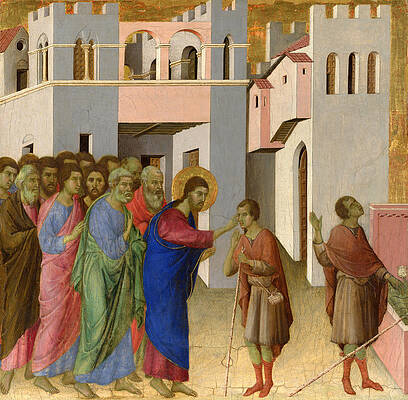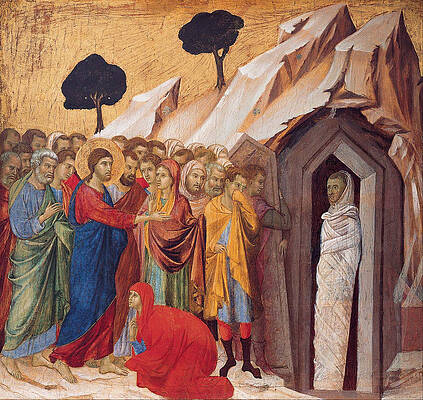Duccio di Buoninsegna
Paintings
Christ and the Samaritan Woman
Jesus opens the Eyes of a Man born Blind
The Annunciation
The Transfiguration
The Raising of Lazarus
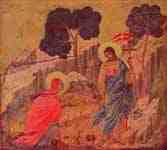
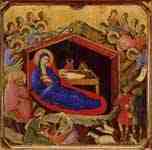
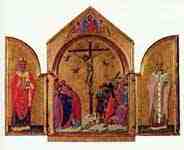
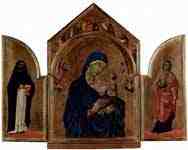


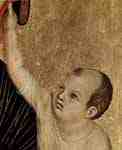


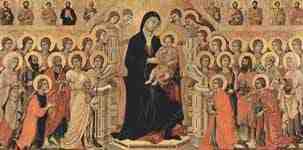

Maestà : Enthroned Madonna , angels and Saints, detail

Maestà : St. Philip and St. James the Elder .

Maestà : St. James the Younger and St. Bartholomew
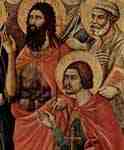


Maestà : Annunciation of death
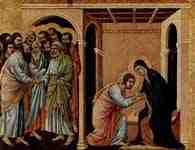
Maestà : Farewell Mary of St. John
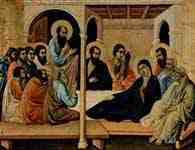
Maestà : Farewell Mary of the Apostles

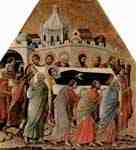
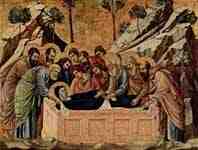
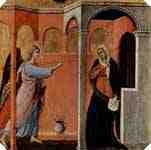
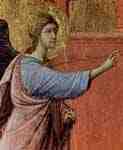
Maestà : Annunciation , detail


Maestà : Adoration of the Magi
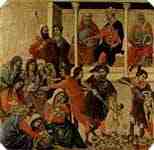
Maestà : Massacre of the Innocents
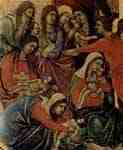
Maestà : Massacre of the Innocents
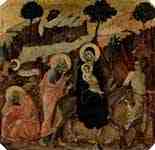
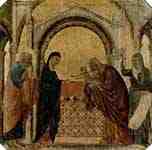
Maestà : Presentation in the Temple
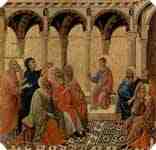
Maestà : The twelve year old Jesus in the Temple







Maestà : calling of the Apostles Peter and Andrew
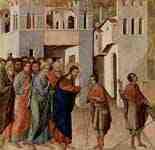
Maestà : The healing of the blind

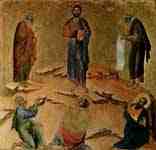
Maestà : Transfiguration ( Transfiguration Domini )

Maestà : Temptation of Christ on the Mountain
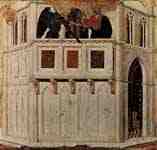


Maestà : Christ's Entry into Jerusalem

Maestà : Christ before the High Priest and denial of Christ

Maestà : Washing of the Feet and the Last Supper
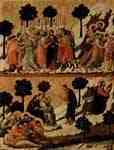
Maestà : Judas Kiss and prayer on the Mount of Olives

Maestà : Judas Kiss and prayer on the Mount of Olives , detail

Maestà : Betrayal of Judas and farewell to the Apostles

Maestà : Mocking of Christ and Christ before Caiaphas

Maestà : Christ accusation and interrogation by Pilate

Maestà : Christ before Pilate and Christ before Herod

Maestà : scourging and crowning with thorns

Maestà : Calvary and innocence of Pilate
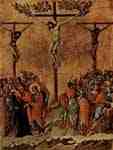

Maestà : Three Marys at the Sepulchre and Descent into Hell


Maestà : Christ at Emmaus and Noli Me Tangere

Maestà : Christ at the closed door
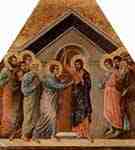
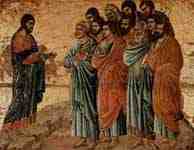
Maestà : Apparition of Christ to the mountain of Galilee
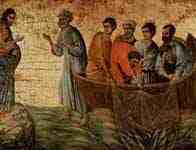
Maestà : appearance of Christ on Tiberia lake
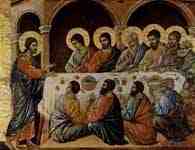
Maestà : appearance of Christ in the Supper of the Apostles
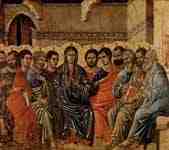
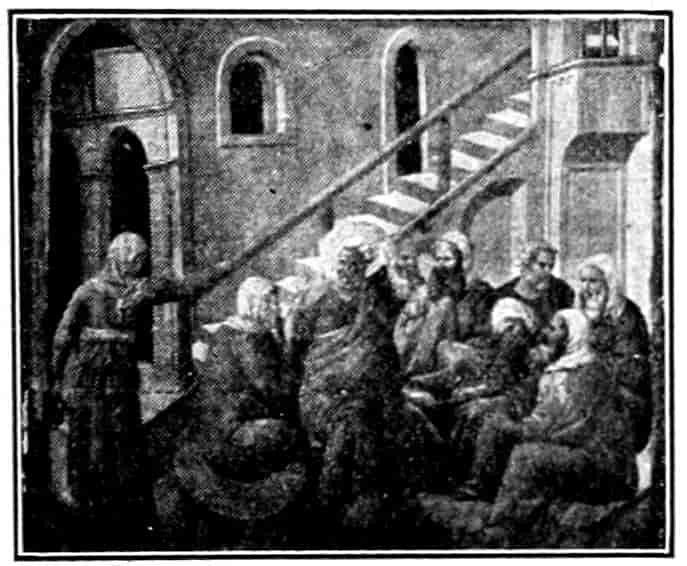
Peter denies Christ.—Opera del Duomo, Siena.
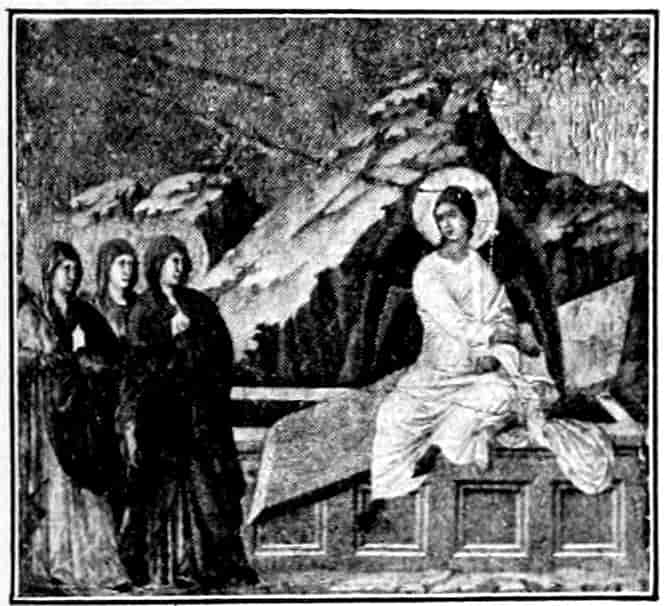
The Marys at the Tomb.—Opera del Duomo.
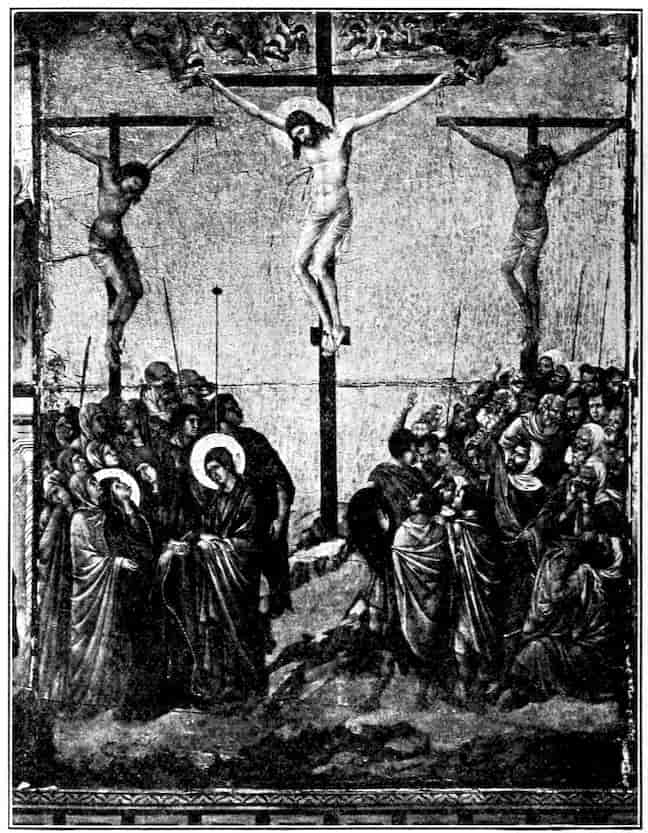
Calvary.—Opera del Duomo.
Fine Art Prints | Greeting Cards | Phone Cases | Lifestyle | Face Masks | Men's , Women' Apparel | Home Decor | jigsaw puzzles | Notebooks | Tapestries | ...
Duccio di Buoninsegna (Italian: [ˈduttʃo di ˌbwɔninˈseɲɲa]; c. 1255-1260 – c. 1318-1319) was an Italian painter, active in the city of Siena in Tuscany, where he was born, in the late 13th and early 14th centuries.
He is considered to be the father of Sienese painting and along with a few others the founder of Western art. He was hired throughout his life to complete many important works in government and religious buildings around Italy. Duccio is credited with creating the painting style of Trecento and the Sienese school, and contributed significantly to the Sienese Gothic style.
Biography
Much about his early life and family is uncertain; but there are records that say he was married with seven children. Although there is a lot still unconfirmed about Duccio and his life, there is more documentation of him than of other Italian painters of his time and earlier. A large part his life must be reconstructed from the evidence of works that can be attributed to him with certainty, and from the evidence contained in his stylistic development.
There are many times that he had debts and fines, leading historians to believe that he had a difficult time managing his life and his money. His artistic talents were enough to overshadow his lack of organization as a citizen, and he became famous in his own lifetime. In the 1300s Duccio became one of the most favored and radical painters in Siena.
Artistic career
The Calling of the Apostles Peter and Andrew (from the Maestà), c. 1308-1311.
Where, and with whom, Duccio studied under is still a matter of great debate, but by analyzing his style and technique art historians have been able to limit the field.[1] Many believe that he studied under Cimabue, while others think that maybe he had actually traveled to Constantinople himself and learned directly from a Byzantine master, mostly due to Duccio’s painting style so closely resembling artwork of Byzantium,
Little is known of his painting career prior to his first documented commission in 1278, when, at the age of 23, he was hired to paint 12 wooden panels to cover government documents for The Nine. This work is now lost. Although Duccio was active from 1268 to about 1311 only approximately 13 of his works survive today. [2]
Only two of Duccio's surviving works can be securely dated. Both were major public commissions:[3] the "Rucellai Madonna" (Galleria degli Uffizi), commissioned in April 1285 by the Compagnia del Laudesi di Maria Vergine for a chapel in the church of Santa Maria Novella in Florence, and the Maestà commissioned for the high altar of Siena Cathedral in 1308 and completed by June 1311.[4]
Style
There is no clear evidence that Duccio painted frescoes.[1] His known works are on wood panel, painted in egg tempera and embellished with gold leaf. Different from his contemporaries and artists before him, Duccio was a master of tempera and managed to conquer the medium with delicacy and precision. Duccio’s style was similar to Byzantine art in some ways, with its gold backgrounds and familiar religious scenes but also different and more experimental. Duccio’s paintings are warm with color, and inviting. His pieces held a high level of beauty with delicate details, sometimes inlaid with jewels and almost ornamental fabrics. Duccio was also noted for his complex organization of space. Characters were organized specifically and purposefully. In his Rucellai Madonna c. 1285 the viewer can see all of these qualities at play. [5] Duccio began to break down the sharp lines of Byzantine art, and soften the figures. He used modeling (playing with light and dark colors) to reveal the figures underneath the heavy drapery; hands, faces, and feet became more rounded and three-dimensional.
Duccio was also one of the first painters to put figures in architectural settings. He began to explore and investigate depth and space. He also had a refined attention to emotion, not seen in other painters at this time. The characters interact tenderly, and softly with each other, it is no longer Christ and the Virgin, it is mother and child. With this he flirts with naturalism but his paintings are still awe inspiring. Duccio’s figures seem to be out of this world and heavenly; existing elsewhere with beautiful colors, soft hair, gracefulness and draped in textures not available to mere humans. His influence can be seen in the work of many other painters, including Simone Martini and the brothers Ambrogio and Pietro Lorenzetti.
Known surviving works
Madonna with Child - Tempera and gold on wood, Museo d'arte sacra della Val d'Arbia, Buonconvento, near Siena
Gualino Madonna - Tempera and gold on wood, Galleria Sabauda, Turin
Madonna with Child and two Angels (Also known as the Crevole Madonna; c. 1280) - Tempera and gold on wood, Museo dell'Opera Metropolitana, Siena
Madonna with Child enthroned and six Angels (c. 1285) - Also known as the Rucellai Madonna / Madonna Rucellai - Tempera and gold on wood, Galleria degli Uffizi, Florence, Italy (on deposit from Santa Maria Novella)
Crucifix - Tempera on wood, Odescalchi Collection, Rome, formerly in the Castello Orsini at Bracciano
Crucifix (Grosseto) (1289), - Church of San Francesco, Grosseto
Madonna of the Franciscans (c. 1300) - Tempera and gold on wood, Pinacoteca Nazionale, Siena
Assumption, Burial and Crowning of the Virgin - Stained glass window, Siena Cathedral
Maestà - Tempera and gold on wood - Kunstmuseum, Bern, Switzerland
Madonna and Child - Tempera and gold on wood, Metropolitan Museum of Art, New York (formerly in the Stoclet Collection, Brussels, Belgium)[3][6]
Madonna with Child and six Angels - Tempera and gold on wood, Galleria Nazionale dell'Umbria, Perugia, Italy
Polyptych: Madonna and Child with Saints Augustine, Paul, Peter, Dominic, four angels and Christ blessing (also known as Dossale no. 28; c. 1305) - Tempera and gold on wood, Pinacoteca Nazionale, Siena
Polyptych no. 47: Madonna and Child with Saints Agnes, John the Evangelist, John the Baptist, and Mary Magdalene; ten Patriarchs and Prophets, with Christ blessing - Tempera and gold on wood, Pinacoteca Nazionale, Siena
The Surrender of the Castle of Giuncarico - Fresco, Palazzo Pubblico, Siena
Maestà with Episodes from Christ's Passion - Tempera and gold on wood,- Duomo, Massa Marittima, Italy
Small Triptych: Flagellation of Christ; Crucifixion with Angels; Deposition in the Tomb - Tempera and gold on wood, Società di Esecutori di Pie Deposizioni, Siena
Small Triptych: Madonna and Child with four Angels, Saints Dominic, Agnes and seven Prophets / Madonna con Bambino e con quattro angeli, i santi Domenico, Agnese, e sette profeti - Tempera and gold on wood - The National Gallery, London, England
Portable Altarpiece: Crucifixion with Christ blessing; St Nicholas; St Gregory - Tempera and gold on wood, Museum of Fine Arts, Boston, USA[7]
Small Triptych: Crucifixion with Angels; Annunciation and Madonna with Child and Angels; Stigmata of St Francis with Madonna and Christ enthroned - Tempera and gold on wood, Royal Collections, Hampton Court, near London, England
Maestà (Madonna with Child Enthroned and Twenty Angels and Nineteen Saints) - Tempera and gold on wood, Museo dell'Opera Metropolitana, Siena
Maestá (The Temptation of Christ on the Mountain) - Tempera and gold on wood - The Frick Collection, New York
The Crucifixion (c.1315) - Tempera and gold on wood - New-York Historical Society, New York
References
Smart 1978, p. 39.
smarthistory.khanacademy.org/duccio-madonna.html
"Madonna and Child Duccio di Buoninsegna (Italian, active by 1278–died 1318 Siena)". Metropolitan Museum of Art. Retrieved 10 December 2012.
Smart 1978, p. 40.
Polzer, Joseph (2005). "A Question of Method: Quantitative Aspects of Art Historical Analysis in the Classification of Early Trecento Italian Painting Based on Ornamental Practice". Mitteilungen des Kunsthistorisches Institutes in Florenz 49: 33–100. Retrieved 5 March 2012.
Christiansen, Keith. "Recent Acquisitions, A Selection: 2004–2005." Metropolitan Museum of Art Bulletin 63 (Fall 2005), pp. 14–15, ill. on cover (color, cropped) and p. 14 (color).
Boston MFA
Sources
Beck, James (2006). Duccio to Raphael. European Press Academic Publishing. ISBN 8883980433.
Smart, Alastair (1978). The Dawn of Italian Painting 1250–1400. Oxford: Phaidon. ISBN 0714817694.
Further reading
Bellosi, Luciano (1999). Duccio: The Maestà. New York: Thames and Hudson. ISBN 9780500237717.
Bellosi, Luciano; Ragionieri, Giovanna (2003). Duccio di Buoninsegna. Giunti Editore. ISBN 9788809032088.
Jannella, Cecilia (1991). Duccio di Buoninsegna. Scala/Riverside. ISBN 9781878351180.
External links
www.DuccioDiBuoninsegna.org 130 works by Duccio
"The Missing Madonna: The story behind the Met's most expensive acquisition" The New Yorker Magazine, July 11 & 18, 2005, by Calvin Tomkins
Duccio in Panopticon Virtual Art Gallery
"Duccio di Buoninsegna". The New Student's Reference Work. 1914.
---
Fine Art Prints | Greeting Cards | Phone Cases | Lifestyle | Face Masks | Men's , Women' Apparel | Home Decor | jigsaw puzzles | Notebooks | Tapestries | ...
---
Artist
A - B - C - D - E - F - G - H - I - J - K - L - M -
N - O - P - Q - R - S - T - U - V - W - X - Y - Z
Retrieved from "http://en.wikipedia.org/"
All text is available under the terms of the GNU Free Documentation License





